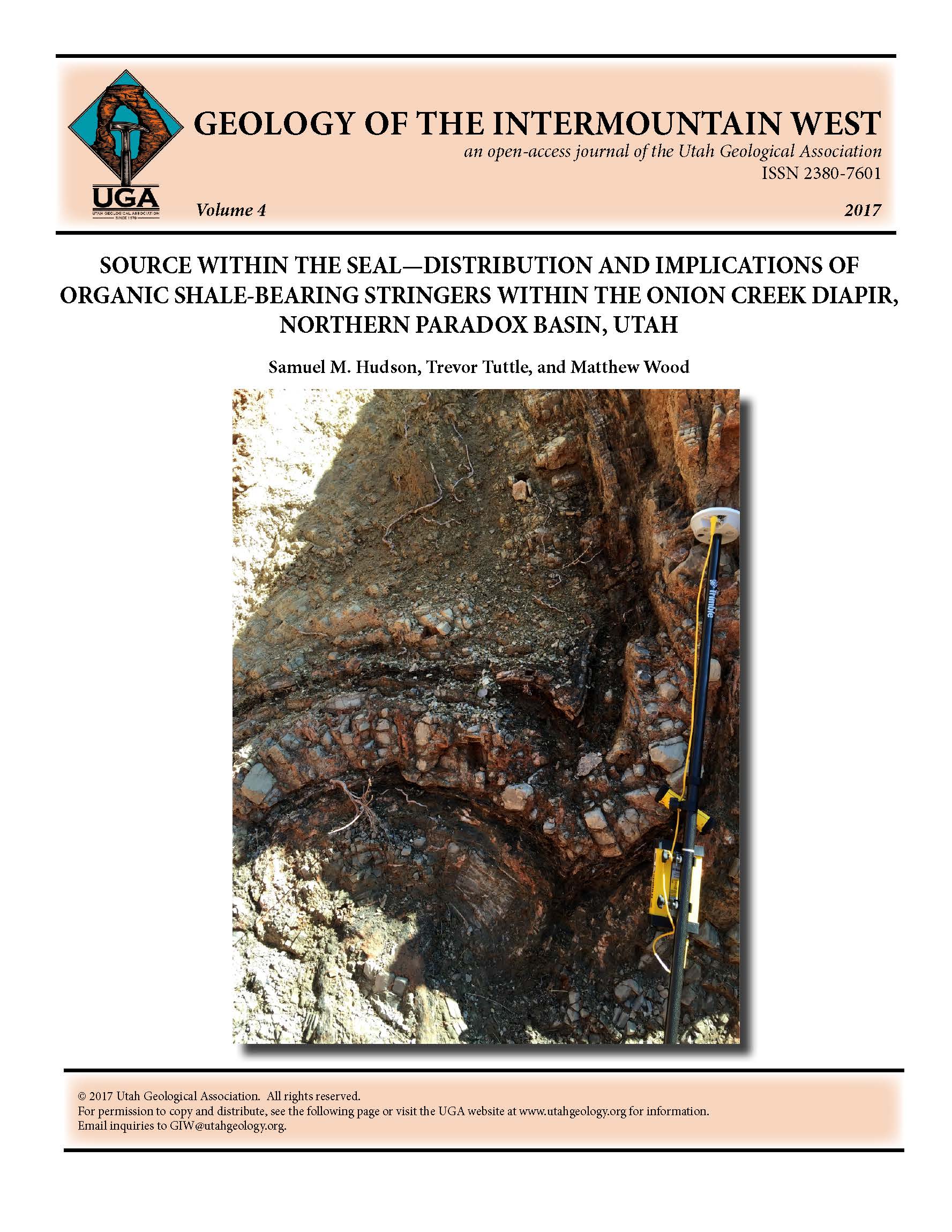Source within the seal—Distribution and implications of organic shale-bearing stringers within the Onion Creek diapir, northern Paradox Basin, Utah
Abstract
The Onion Creek diapir is one of the best exposures of a dissected salt diapir in the world, offering a unique opportunity to better understand the internal character of heterolithic diapirs that are common in sedimentary basins worldwide. Large amounts of interbedded shale, carbonate, and evaporites are incorporated into the diapir as stringers or boudins, and excellent three-dimensional exposure allows us to document the nature, size, deformation, and distribution of these stringers. Blocks range in size from single, disaggregated layers of dolomite to several meters of coherent stringers that contain multiple cycles of dolomite- shale-evaporite and are upwards of 20 m thick and more than 100 m in observed length. The largest blocks are most commonly located along the margins of the exposed diapir, though stringers are common throughout the exposed caprock. In areas devoid of large stringers, there is more extensive deformation of the gypsum caprock, suggesting that the presence of stringers leads to a more heterolithic distribution of stress within the salt as it diapirically rises. These observations can help to better characterize similar diapirs elsewhere that are not well exposed at the surface. Black shale is present in all observed large stringers of the Onion Creek diapir. These shale beds are interpreted to have been deposited in a shallow, restricted marginal marine environment along with the interbedded carbonate and evaporite strata. Pyrolysis analysis of 13 samples from within the stringers shows a range of 2.56 to 60.22% total organic carbon (TOC), with an average value of 16.93%. These strata contain Type I/Type II hydrocarbon source facies, consistent with a restricted shallow marine environment. Tmax data suggest that these source rock facies have been exposed to sufficient thermal energy to generate hydrocarbons (average = 437o C), as evidenced by common hydrocarbon staining of intra-stringer carbonate strata and evaporite beds surrounding the stringers. Twelve additional samples were collected from these stained strata and pyrolysis analysis shows that all are enriched in free oil, as shown by elevated S1 peaks, high production index ratios, and TOC values of 0.64 to 1.66%. This hydrocarbon staining is found around stringers near the center of the exposed caprock, as well as stringers along the margins. Near the margins in particular, extensive alteration can be seen across tens of meters of evaporitic strata, showing that hydrocarbons are effectively generating within and migrating away from stringers fully encased in the anhydrite caprock of the Onion Creek diapir. This has important implications for potential seal integrity of diapiric caprocks, as well as providing a potential mechanism for caprock carbonate formation suggested by other researchers.

Copyright (c) 2017 Utah Geological Association

This work is licensed under a Creative Commons Attribution 4.0 International License.




